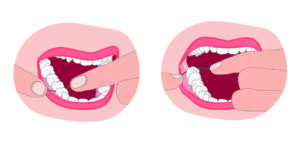Flossing, the right way.
- Home
- /
- Blog
- /
- Dental Advice
- /
- Flossing, the right way.
Flossing is one of the most essential, yet often overlooked, steps in maintaining excellent oral hygiene. While brushing removes plaque and food particles from the surfaces of your teeth, flossing takes care of the spaces in between that a toothbrush simply can’t reach. Done correctly, flossing can significantly reduce the risk of cavities, gum disease, and bad breath. Here’s a step-by-step guide to mastering the art of flossing for maximum effectiveness.
Flossing is one of the most essential, yet often overlooked, steps in maintaining excellent oral hygiene. While brushing removes plaque and food particles from the surfaces of your teeth, flossing takes care of the spaces in between that a toothbrush simply can’t reach. Done correctly, flossing can significantly reduce the risk of cavities, gum disease, and bad breath. Here’s a step-by-step guide to mastering the art of flossing for maximum effectiveness.
Flossing removes plaque and food debris that build up between your teeth and along the gumline. If left untreated, this build up can lead to tartar, which is much harder to remove without professional cleaning. Proper flossing doesn’t just protect your teeth—it keeps your gums healthy too.
There are various types of dental floss available, including waxed, unwaxed, flavoured, tape, and even specialized tools like picks or water flossers. Choose one that you’re comfortable using and fits well between your teeth.
Cut a piece about 18 inches long. This length allows you to use a clean section for each tooth.
Wind most of the floss around the middle finger of one hand and the rest around the middle finger of the other hand. Leave about 1-2 inches of floss to work with.
Hold the floss tightly between your thumbs and index fingers, leaving enough slack to guide it between your teeth.

Gently glide it beneath the gumline on both sides of the tooth. Be sure to go as low as you can without causing discomfort.

As you move from tooth to tooth, use a fresh section to avoid redistributing plaque.
The molars at the back are often missed. Make sure to give these teeth as much attention as the others.
If you find it uncomfortable or notice persistent bleeding or discomfort, it’s a good idea to schedule a visit with your dentist. They can help identify any underlying issues and recommend solutions tailored to your needs.
Back to Blog